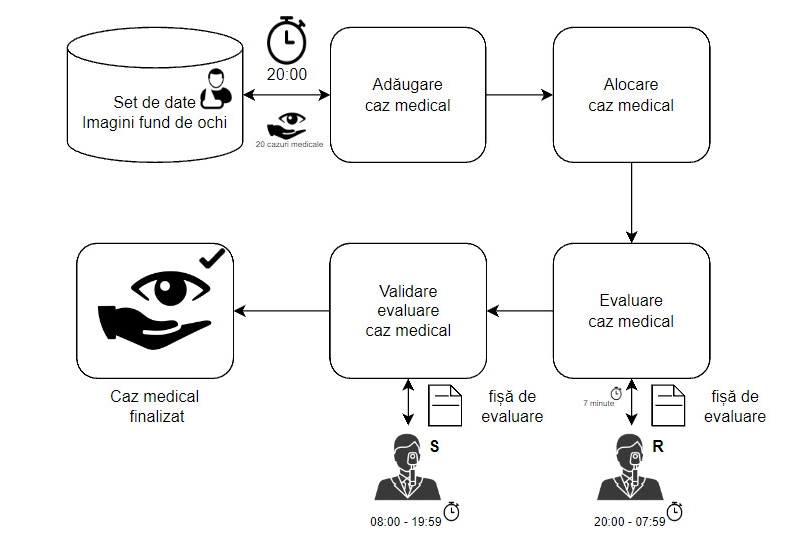
Application for training residents
Developer: Ionela Fagadar
Advisors: Anca Marginean, Simona Nicoara, George Muntean, Adrian Groza, Radu Slavescu
Residency training in medicine lays the foundation for future medical doctors. In real-world settings, training centers face challenges in trying to create balanced residency programs, with cases encountered by residents not always being fairly distributed among them. In recent years, there has been a tremendous advancement in developing artificial intelligence (AI)-based algorithms with human expert guidance for medical imaging segmentation, classification, and prediction. In this paper, we turned our attention from training machines to letting them train us and developed an AI framework for personalised case-based ophthalmology residency training. The framework is built on two components: (1) a deep learning (DL) model and (2) an expert-system-powered case allocation algorithm. The DL model is trained on publicly available datasets by means of contrastive learning and can classify retinal diseases from color fundus photographs (CFPs). Patients visiting the retina clinic will have a CFP performed and afterward, the image will be interpreted by the DL model, which will give a presumptive diagnosis. This diagnosis is then passed to a case allocation algorithm which selects the resident who would most benefit from the specific case, based on their case history and performance. At the end of each case, the attending expert physician assesses the resident’s performance based on standardised examination files, and the results are immediately updated in their portfolio. Our approach provides a structure for future precision medical education in ophthalmology. [paper]

User manual for real practice
-
Operator The operator introduces the case
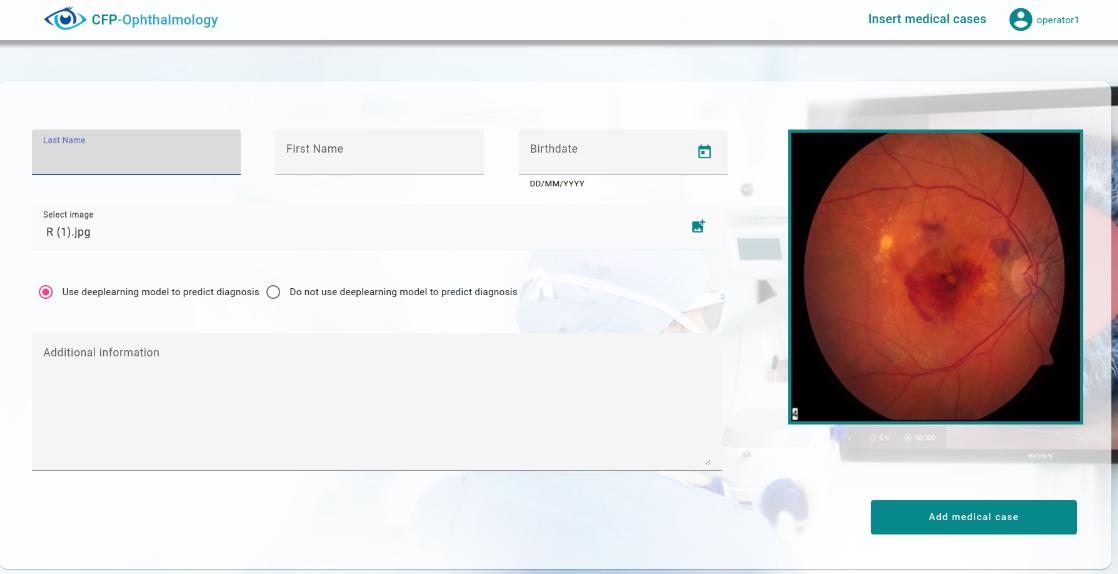
-
Rezident The rezident can access the alocated cases and start the diagnose process. The timing for the process is optional.
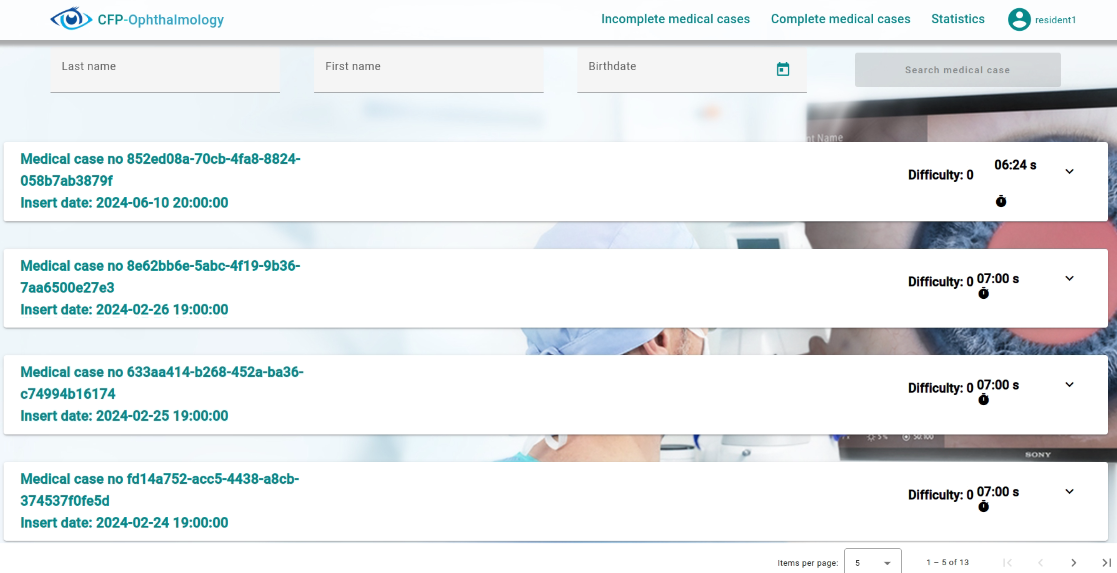
-
Rezident For each case, the resident must first select a diagnose.
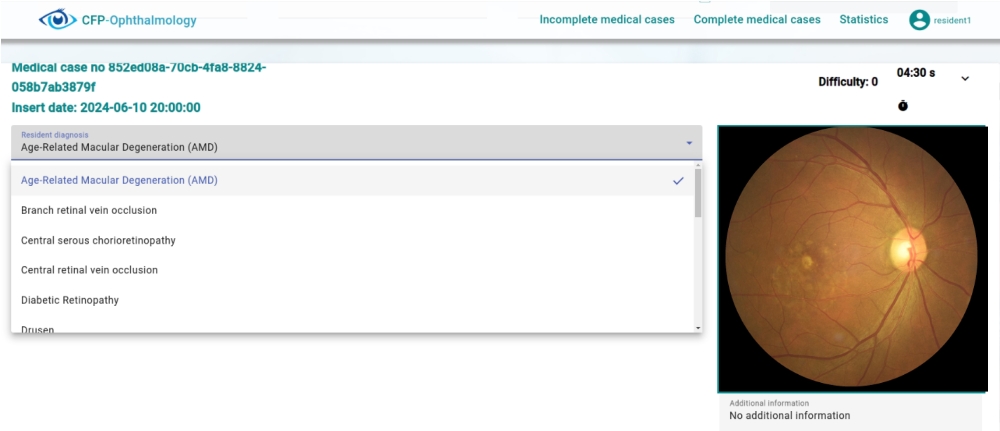
-
Rezident Once a diagnose is selected, the corresponding Evaluation File is visible and the Resident must select the signs present in fundus image.
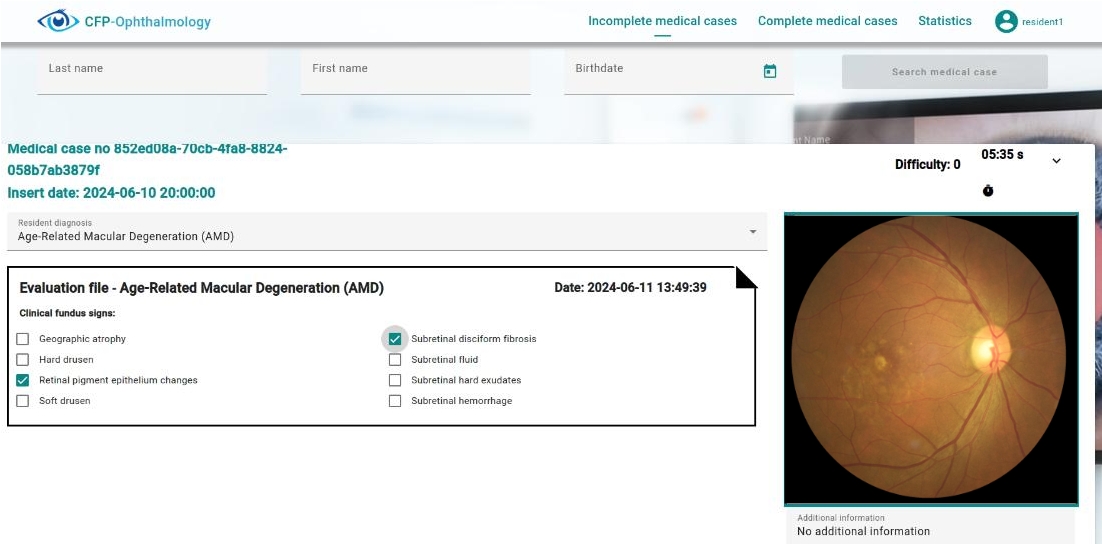
-
RezidentThe rezident can save the diagnose for later changes or can finalise the case. The list of all complete/incomplte cases can be explored.
The completed cases can have two states: evaluated by the expert, or not yet evaluated.
For each complete case, the resident can see his diagnose, the initial diagnose given by the operator or by the ML model, and if available, the expert diagnose.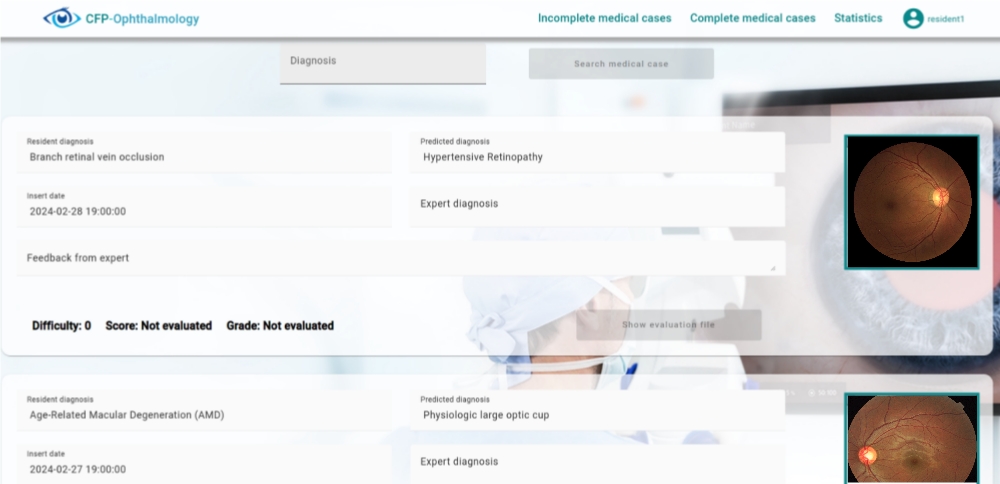
-
Rezident At any time, the resident can see statistics about cases allocated to him/her, how many wore correctly diagnosed, and his/her evolution during time for each diagnose class.
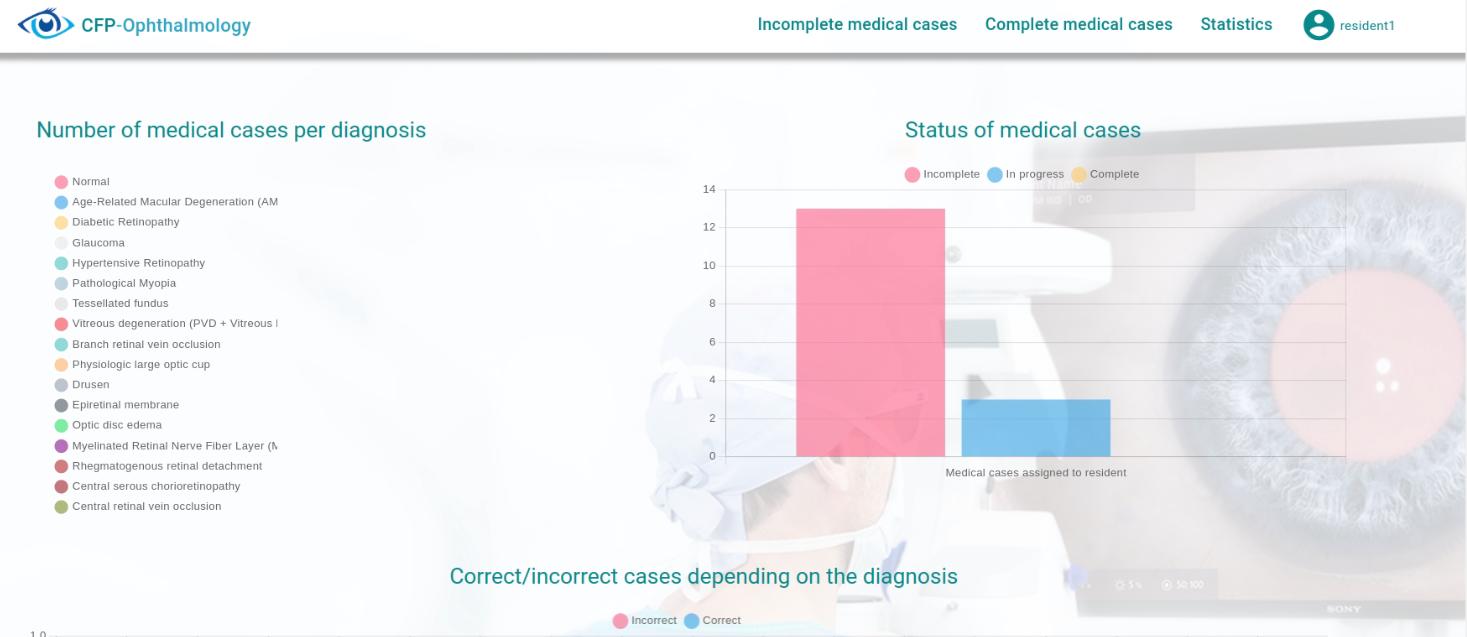
Expert The expert evaluates the Resident diagnose and selected signs.
The total score is 0 if the diagnose was wrong. If the diagnose is correct, the score depends on number of correctly assessed signs (both present and absent) .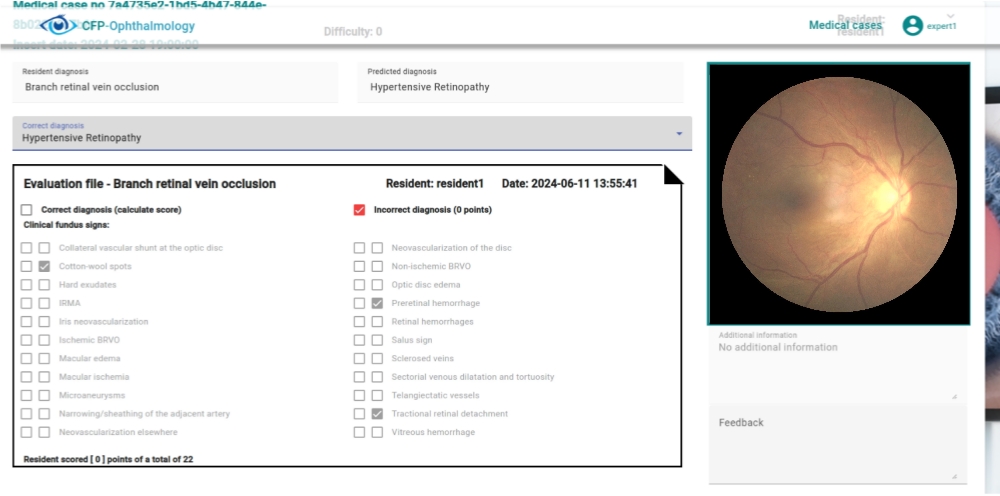
Resident The rezident can see the evaluation given by the expert, feedback, and marking on the images.

Controlled experiment
In a controlled experiment, there is an initial set of images. The allocation algorithms can be set to run with a certain frequency: give N cases each day (each M day) to each resident, but the cases are selected from the initial list. For each allocated case, the resident has a fix amount of time. This setting allows teaching experiences, when the resident is at home. The rest of steps are teh same with the Real Practice setup.
